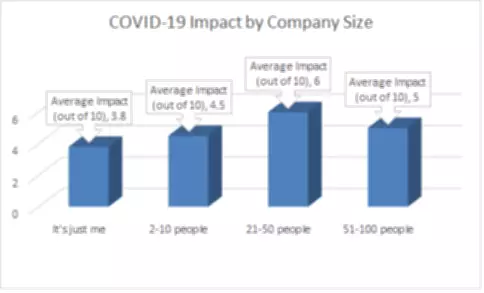Content

If they didn’t pay any dividend during that year, the $10 dividend per share wouldn’t be carried forward into the year 2016. Our years of investment experience combined with knowledge of securities litigation makes us the right attorneys to handle your case. Voting rights are limited, but if dividends are not fully paid, shareholders obtain full voting rights. If an investor paid par ($100) today for a typical straight preferred, such an investment would give a current yield of just over six percent.
They cite the company’s performance, an insufficient cash flow, and escalating operating expenses as the reason. If a shareholder holds non-cumulative stock, they are not entitled to receive this skipped dividend. The noncumulative preferred stock company can also not be held liable for not issuing the dividend. However, if a shareholder holds cumulative stock, they are entitled to the fourth quarter’s $0.25 dividend plus the dividend in the following quarter.
Comparison Table Between Cumulative and Non-cumulative Preferred Stocks
Cumulative stockholders have the right to claim their missed dividends while non-cumulative stockholders do not have any right to claim their missed or omitted dividends in the future. Cumulative preferred stock can receive the dividend even before the stockholders receive their payment. The shareholders will receive the promised fixed amount whenever the dividends are declared. All the past omitted dividends are accumulated and assured to be paid. The ordinary shareholders will receive the residual amount after settlement of all cumulative preferred shareholder claims from the previous to the current year of distribution. With a growth investment strategy, the investor may opt to choose to convert bonds into preferred shares.
- There is not much assurance in the investment of non-cumulative preferred stocks.
- The same shareholders have a right to claim any pending dividend payment the issuing company owes them.
- If you are having trouble seeing or completing this challenge, this page may help.
- This is calculated by adding the dividends in arrears to the cumulative dividend per share.
- Preferred dividends are the dividends paid out to a firm’s preferred stock shareholders.
- Noncumulative preferred stocks are rare because they are unattractive to preferred stock investors.
Hence it is beneficial for the companies to issue noncumulative preference shares as the payments get suspended without any penalties. Types Of Preferred StocksA preferred share is a share that enjoys priority in receiving dividends compared to common stock. The dividend rate can be fixed or floating depending upon the terms of the issue. However, their claims are discharged before the shares of common stockholders at the time of liquidation. When it comes to a company liquidation, the holders of noncumulative preferred shares also have preferential rights. For instance, when the company liquidates, they are entitled to receive payment first before the common stockholders.
Related to Noncumulative perpetual preferred stock
This is why cumulative preferred shares are more valuable than noncumulative preferred shares. Like bonds, preferred stocks are rated by major credit rating agencies. Their ratings are generally lower than those of bonds, because preferred dividends do not carry the same guarantees as interest payments from bonds, and because preferred-stock holders’ claims are junior to those of all creditors. Cumulative preferred stocks provide safety to the shareholders as it guarantees the payment of dividend. These stocks are treated as perpetuity and do not allow exercising voting rights. With cumulative preferred shares, it covers all unpaid dividends which give the stockholder the right to claim all previous undistributed dividends.

The preferred shares are typically converted to common shares with the completion of an initial public offering or acquisition. An additional advantage of issuing preferred shares to investors but common shares to employees is the ability to retain a lower 409 valuation for common shares and thus a lower strike price for incentive stock options. Convertible preferred stock—These are preferred issues that holders can exchange for a predetermined number of the company’s common-stock shares.
How is Noncumulative Stock Used?
The company is not obliged to pay noncumulative stockholders any unpaid dividends. Cumulative preferred stock can be calculated by multiplying the par value by the dividend rate and then adding all dividends in arrears owed. Dividends in arrears are dividends on cumulative preferred shares that haven’t been declared or paid https://www.bookstime.com/ yet. Innoncumulative preference shares, a company can skip the dividend in the year. This preference is due to the increased investment security they provide for the investor. Cumulative is issued as preferred for a company to be able to price their dividends, lower than the current market rate for non-cumulative preferred.
- An additional advantage of issuing preferred shares to investors but common shares to employees is the ability to retain a lower 409 valuation for common shares and thus a lower strike price for incentive stock options.
- Preferred stock shareholders also have no voting rights or privileges.
- These issues receive preference over all other classes of the company’s preferred .
- Preference preferred stock—Ranked behind a company’s prior preferred stock are its preference preferred issues.
FundsNet requires Contributors, Writers and Authors to use Primary Sources to source and cite their work. These Sources include White Papers, Government Information & Data, Original Reporting and Interviews from Industry Experts. Learn more about the standards we follow in producing Accurate, Unbiased and Researched Content in our editorial policy. An investor may choose to invest in Preferred Shares or Common Shares. The information on this blog is provided for general informational purposes and is not legal advice. Get stock recommendations, portfolio guidance, and more from The Motley Fool’s premium services.
Also, this issuance of dividends when it comes to this type of stock is at the discretion of the company’s board of directors. So, only a few companies offer this kind of shares since investors rarely buy them unless the discount offer is attractive. It does not provide a provision for the payment of unpaid dividends. Preferred stocks holders are prioritized before other common stockholders during the dividend payment. The two types of preferred stocks are cumulative preferred stocks and non-cumulative preferred stocks. Preferred stock where past, omitted dividends do not have to be paid before a dividend can be paid to common stockholders.
- Preferred stock ranks ahead of common shares in getting something back if the company declares bankruptcy and sells off its assets.
- For example, ABC Company normally issues a $0.50 quarterly dividend to its preferred shareholders.
- This rate is the stated dollar value amount or the percentage of the par value.
- Investopedia does not include all offers available in the marketplace.
- Those who have preferred stock are known as “preference shareholders.” Preference shareholders have priority over common shareholders.
Think of this similar to the coupon rate of a bond when calculating the coupon payment. The formula for annual preferred stock dividends is the product of par value, and dividend rate multiplied by the number of preferred shares. This is also the amount to be added to a firm’s dividends in arrears if the preferred stock is cumulative and dividends were not declared for the year. If the firm pays out dividends quarterly, we will divide the annual preferred stock dividends by four. This means that if dividends are not declared or paid in any given year, they accumulate and must be paid out in full before any other dividends are paid to other shareholders. Dividends in arrears aren’t considered a liability to the firm, but they have to be disclosed either on the balance sheet or in the footnotes to the financial statements. Non-cumulative preferred stock doesn’t have the accumulation feature that cumulative preferred stock has.
Cumulative Preferred Stock vs. Non-Cumulative Preferred Stock
Therefore, prior preferreds have less credit risk than other preferred stocks . Preferred shareholders are not entitled to receive any residual amount of the net income after the preferred shareholders dividend distribution and payment of the company’s obligation, unlike common shareholders. If preferred stock is cumulative then all dividends in arrears will be paid to cumulative dividend holders before any other shareholder gets paid dividends. Dividends in arrears are dividends that haven’t been declared or paid. For example, let’s say a company or corporation issued 200,000 shares of $10 non-cumulative preferred stock in January 2015.


